Synopsis: Membrane Inclusions and Protrusions
Updated: 2012-10-31 14:00:00
Tubulelike structures form when multiple nanoparticles adhere to the inner or outer surfaces of a spherical membrane. Published Wed Oct 31, 2012
 Quantum Diaries Thoughts on work and life from particle physicists from around the . world Home About Quantum Diaries Latest Posts All Blogs John Felde UC Davis USA View Blog Read Bio Latest Posts 2012.03.05 Fast Photosensors for Neutrino Physics 2011.11.22 Recent Events at UC Davis 2011.11.09 First Double Chooz Neutrino Oscillation Result USLHC USLHC USA View Blog Read Bio Latest Posts 2012.10.30 Zombies at CERN 2012.10.22 Are the Higgs Rumors True 2012.10.16 For the Higgs , No Theological Assistance Required Frank Simon MPI for Physics Germany View Blog Read Bio Latest Posts 2012.07.04 Plus Two 2011.12.14 After the talk is before the talk 2011.10.24 Breathe Flip Tanedo USLHC USA View Blog Read Bio Latest Posts 2012.07.19 The Post-Higgs Hangover : where’s the new physics 2012.07.06 More
Quantum Diaries Thoughts on work and life from particle physicists from around the . world Home About Quantum Diaries Latest Posts All Blogs John Felde UC Davis USA View Blog Read Bio Latest Posts 2012.03.05 Fast Photosensors for Neutrino Physics 2011.11.22 Recent Events at UC Davis 2011.11.09 First Double Chooz Neutrino Oscillation Result USLHC USLHC USA View Blog Read Bio Latest Posts 2012.10.30 Zombies at CERN 2012.10.22 Are the Higgs Rumors True 2012.10.16 For the Higgs , No Theological Assistance Required Frank Simon MPI for Physics Germany View Blog Read Bio Latest Posts 2012.07.04 Plus Two 2011.12.14 After the talk is before the talk 2011.10.24 Breathe Flip Tanedo USLHC USA View Blog Read Bio Latest Posts 2012.07.19 The Post-Higgs Hangover : where’s the new physics 2012.07.06 More Quantum Diaries Thoughts on work and life from particle physicists from around the . world Home About Quantum Diaries Latest Posts All Blogs John Felde UC Davis USA View Blog Read Bio Latest Posts 2012.03.05 Fast Photosensors for Neutrino Physics 2011.11.22 Recent Events at UC Davis 2011.11.09 First Double Chooz Neutrino Oscillation Result USLHC USLHC USA View Blog Read Bio Latest Posts 2012.10.30 Zombies at CERN 2012.10.22 Are the Higgs Rumors True 2012.10.16 For the Higgs , No Theological Assistance Required Frank Simon MPI for Physics Germany View Blog Read Bio Latest Posts 2012.07.04 Plus Two 2011.12.14 After the talk is before the talk 2011.10.24 Breathe Flip Tanedo USLHC USA View Blog Read Bio Latest Posts 2012.07.19 The Post-Higgs Hangover : where’s the new physics 2012.07.06 More
Quantum Diaries Thoughts on work and life from particle physicists from around the . world Home About Quantum Diaries Latest Posts All Blogs John Felde UC Davis USA View Blog Read Bio Latest Posts 2012.03.05 Fast Photosensors for Neutrino Physics 2011.11.22 Recent Events at UC Davis 2011.11.09 First Double Chooz Neutrino Oscillation Result USLHC USLHC USA View Blog Read Bio Latest Posts 2012.10.30 Zombies at CERN 2012.10.22 Are the Higgs Rumors True 2012.10.16 For the Higgs , No Theological Assistance Required Frank Simon MPI for Physics Germany View Blog Read Bio Latest Posts 2012.07.04 Plus Two 2011.12.14 After the talk is before the talk 2011.10.24 Breathe Flip Tanedo USLHC USA View Blog Read Bio Latest Posts 2012.07.19 The Post-Higgs Hangover : where’s the new physics 2012.07.06 More Quantum Diaries Thoughts on work and life from particle physicists from around the . world Home About Quantum Diaries Latest Posts All Blogs John Felde UC Davis USA View Blog Read Bio Latest Posts 2012.03.05 Fast Photosensors for Neutrino Physics 2011.11.22 Recent Events at UC Davis 2011.11.09 First Double Chooz Neutrino Oscillation Result USLHC USLHC USA View Blog Read Bio Latest Posts 2012.10.30 Zombies at CERN 2012.10.22 Are the Higgs Rumors True 2012.10.16 For the Higgs , No Theological Assistance Required Frank Simon MPI for Physics Germany View Blog Read Bio Latest Posts 2012.07.04 Plus Two 2011.12.14 After the talk is before the talk 2011.10.24 Breathe Flip Tanedo USLHC USA View Blog Read Bio Latest Posts 2012.07.19 The Post-Higgs Hangover : where’s the new physics 2012.07.06 More
Quantum Diaries Thoughts on work and life from particle physicists from around the . world Home About Quantum Diaries Latest Posts All Blogs John Felde UC Davis USA View Blog Read Bio Latest Posts 2012.03.05 Fast Photosensors for Neutrino Physics 2011.11.22 Recent Events at UC Davis 2011.11.09 First Double Chooz Neutrino Oscillation Result USLHC USLHC USA View Blog Read Bio Latest Posts 2012.10.30 Zombies at CERN 2012.10.22 Are the Higgs Rumors True 2012.10.16 For the Higgs , No Theological Assistance Required Frank Simon MPI for Physics Germany View Blog Read Bio Latest Posts 2012.07.04 Plus Two 2011.12.14 After the talk is before the talk 2011.10.24 Breathe Flip Tanedo USLHC USA View Blog Read Bio Latest Posts 2012.07.19 The Post-Higgs Hangover : where’s the new physics 2012.07.06 More Quantum Diaries Thoughts on work and life from particle physicists from around the . world Home About Quantum Diaries Latest Posts All Blogs John Felde UC Davis USA View Blog Read Bio Latest Posts 2012.03.05 Fast Photosensors for Neutrino Physics 2011.11.22 Recent Events at UC Davis 2011.11.09 First Double Chooz Neutrino Oscillation Result USLHC USLHC USA View Blog Read Bio Latest Posts 2012.10.30 Zombies at CERN 2012.10.22 Are the Higgs Rumors True 2012.10.16 For the Higgs , No Theological Assistance Required Frank Simon MPI for Physics Germany View Blog Read Bio Latest Posts 2012.07.04 Plus Two 2011.12.14 After the talk is before the talk 2011.10.24 Breathe Flip Tanedo USLHC USA View Blog Read Bio Latest Posts 2012.07.19 The Post-Higgs Hangover : where’s the new physics 2012.07.06 More
Quantum Diaries Thoughts on work and life from particle physicists from around the . world Home About Quantum Diaries Latest Posts All Blogs John Felde UC Davis USA View Blog Read Bio Latest Posts 2012.03.05 Fast Photosensors for Neutrino Physics 2011.11.22 Recent Events at UC Davis 2011.11.09 First Double Chooz Neutrino Oscillation Result USLHC USLHC USA View Blog Read Bio Latest Posts 2012.10.30 Zombies at CERN 2012.10.22 Are the Higgs Rumors True 2012.10.16 For the Higgs , No Theological Assistance Required Frank Simon MPI for Physics Germany View Blog Read Bio Latest Posts 2012.07.04 Plus Two 2011.12.14 After the talk is before the talk 2011.10.24 Breathe Flip Tanedo USLHC USA View Blog Read Bio Latest Posts 2012.07.19 The Post-Higgs Hangover : where’s the new physics 2012.07.06 More Quantum Diaries Thoughts on work and life from particle physicists from around the . world Home About Quantum Diaries Latest Posts All Blogs John Felde UC Davis USA View Blog Read Bio Latest Posts 2012.03.05 Fast Photosensors for Neutrino Physics 2011.11.22 Recent Events at UC Davis 2011.11.09 First Double Chooz Neutrino Oscillation Result USLHC USLHC USA View Blog Read Bio Latest Posts 2012.10.30 Zombies at CERN 2012.10.22 Are the Higgs Rumors True 2012.10.16 For the Higgs , No Theological Assistance Required Frank Simon MPI for Physics Germany View Blog Read Bio Latest Posts 2012.07.04 Plus Two 2011.12.14 After the talk is before the talk 2011.10.24 Breathe Flip Tanedo USLHC USA View Blog Read Bio Latest Posts 2012.07.19 The Post-Higgs Hangover : where’s the new physics 2012.07.06 More
Quantum Diaries Thoughts on work and life from particle physicists from around the . world Home About Quantum Diaries Latest Posts All Blogs John Felde UC Davis USA View Blog Read Bio Latest Posts 2012.03.05 Fast Photosensors for Neutrino Physics 2011.11.22 Recent Events at UC Davis 2011.11.09 First Double Chooz Neutrino Oscillation Result USLHC USLHC USA View Blog Read Bio Latest Posts 2012.10.30 Zombies at CERN 2012.10.22 Are the Higgs Rumors True 2012.10.16 For the Higgs , No Theological Assistance Required Frank Simon MPI for Physics Germany View Blog Read Bio Latest Posts 2012.07.04 Plus Two 2011.12.14 After the talk is before the talk 2011.10.24 Breathe Flip Tanedo USLHC USA View Blog Read Bio Latest Posts 2012.07.19 The Post-Higgs Hangover : where’s the new physics 2012.07.06 More Quantum Diaries Thoughts on work and life from particle physicists from around the . world Home About Quantum Diaries Latest Posts All Blogs John Felde UC Davis USA View Blog Read Bio Latest Posts 2012.03.05 Fast Photosensors for Neutrino Physics 2011.11.22 Recent Events at UC Davis 2011.11.09 First Double Chooz Neutrino Oscillation Result USLHC USLHC USA View Blog Read Bio Latest Posts 2012.10.30 Zombies at CERN 2012.10.22 Are the Higgs Rumors True 2012.10.16 For the Higgs , No Theological Assistance Required Frank Simon MPI for Physics Germany View Blog Read Bio Latest Posts 2012.07.04 Plus Two 2011.12.14 After the talk is before the talk 2011.10.24 Breathe Flip Tanedo USLHC USA View Blog Read Bio Latest Posts 2012.07.19 The Post-Higgs Hangover : where’s the new physics 2012.07.06 More
Quantum Diaries Thoughts on work and life from particle physicists from around the . world Home About Quantum Diaries Latest Posts All Blogs John Felde UC Davis USA View Blog Read Bio Latest Posts 2012.03.05 Fast Photosensors for Neutrino Physics 2011.11.22 Recent Events at UC Davis 2011.11.09 First Double Chooz Neutrino Oscillation Result USLHC USLHC USA View Blog Read Bio Latest Posts 2012.10.30 Zombies at CERN 2012.10.22 Are the Higgs Rumors True 2012.10.16 For the Higgs , No Theological Assistance Required Frank Simon MPI for Physics Germany View Blog Read Bio Latest Posts 2012.07.04 Plus Two 2011.12.14 After the talk is before the talk 2011.10.24 Breathe Flip Tanedo USLHC USA View Blog Read Bio Latest Posts 2012.07.19 The Post-Higgs Hangover : where’s the new physics 2012.07.06 More Quantum Diaries Thoughts on work and life from particle physicists from around the . world Home About Quantum Diaries Latest Posts All Blogs John Felde UC Davis USA View Blog Read Bio Latest Posts 2012.03.05 Fast Photosensors for Neutrino Physics 2011.11.22 Recent Events at UC Davis 2011.11.09 First Double Chooz Neutrino Oscillation Result USLHC USLHC USA View Blog Read Bio Latest Posts 2012.10.30 Zombies at CERN 2012.10.22 Are the Higgs Rumors True 2012.10.16 For the Higgs , No Theological Assistance Required Frank Simon MPI for Physics Germany View Blog Read Bio Latest Posts 2012.07.04 Plus Two 2011.12.14 After the talk is before the talk 2011.10.24 Breathe Flip Tanedo USLHC USA View Blog Read Bio Latest Posts 2012.07.19 The Post-Higgs Hangover : where’s the new physics 2012.07.06 More
Quantum Diaries Thoughts on work and life from particle physicists from around the . world Home About Quantum Diaries Latest Posts All Blogs John Felde UC Davis USA View Blog Read Bio Latest Posts 2012.03.05 Fast Photosensors for Neutrino Physics 2011.11.22 Recent Events at UC Davis 2011.11.09 First Double Chooz Neutrino Oscillation Result USLHC USLHC USA View Blog Read Bio Latest Posts 2012.10.30 Zombies at CERN 2012.10.22 Are the Higgs Rumors True 2012.10.16 For the Higgs , No Theological Assistance Required Frank Simon MPI for Physics Germany View Blog Read Bio Latest Posts 2012.07.04 Plus Two 2011.12.14 After the talk is before the talk 2011.10.24 Breathe Flip Tanedo USLHC USA View Blog Read Bio Latest Posts 2012.07.19 The Post-Higgs Hangover : where’s the new physics 2012.07.06 More Quantum Diaries Thoughts on work and life from particle physicists from around the . world Home About Quantum Diaries Latest Posts All Blogs John Felde UC Davis USA View Blog Read Bio Latest Posts 2012.03.05 Fast Photosensors for Neutrino Physics 2011.11.22 Recent Events at UC Davis 2011.11.09 First Double Chooz Neutrino Oscillation Result USLHC USLHC USA View Blog Read Bio Latest Posts 2012.10.30 Zombies at CERN 2012.10.22 Are the Higgs Rumors True 2012.10.16 For the Higgs , No Theological Assistance Required Frank Simon MPI for Physics Germany View Blog Read Bio Latest Posts 2012.07.04 Plus Two 2011.12.14 After the talk is before the talk 2011.10.24 Breathe Flip Tanedo USLHC USA View Blog Read Bio Latest Posts 2012.07.19 The Post-Higgs Hangover : where’s the new physics 2012.07.06 More
Quantum Diaries Thoughts on work and life from particle physicists from around the . world Home About Quantum Diaries Latest Posts All Blogs John Felde UC Davis USA View Blog Read Bio Latest Posts 2012.03.05 Fast Photosensors for Neutrino Physics 2011.11.22 Recent Events at UC Davis 2011.11.09 First Double Chooz Neutrino Oscillation Result USLHC USLHC USA View Blog Read Bio Latest Posts 2012.10.30 Zombies at CERN 2012.10.22 Are the Higgs Rumors True 2012.10.16 For the Higgs , No Theological Assistance Required Frank Simon MPI for Physics Germany View Blog Read Bio Latest Posts 2012.07.04 Plus Two 2011.12.14 After the talk is before the talk 2011.10.24 Breathe Flip Tanedo USLHC USA View Blog Read Bio Latest Posts 2012.07.19 The Post-Higgs Hangover : where’s the new physics 2012.07.06 More On July 4, scientists around the world popped open champagne bottles and toasted the culmination of nearly five decades of research. They had discovered a new particle, one that looked awfully similar to the long-sought Higgs boson.
The Higgs boson has for decades been the last missing piece of the Standard Model of particle physics. But even if the new particle completes the puzzle, some of its pieces still refuse to fit.
On July 4, scientists around the world popped open champagne bottles and toasted the culmination of nearly five decades of research. They had discovered a new particle, one that looked awfully similar to the long-sought Higgs boson.
The Higgs boson has for decades been the last missing piece of the Standard Model of particle physics. But even if the new particle completes the puzzle, some of its pieces still refuse to fit.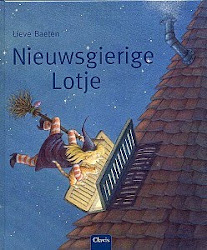 As is well known, both experiments at CERN, ATLAS and CMS, found a similar mass for the Higgs particle. In the beginning, we were told that this happened without each experiment knowing the results of the other.Slowly, the truth is surfacing:"Half of ATLAS is sleeping with half of CMS", explains one of the researchers.Ok, now we know how the agreement between the two experiments occurred. Calling the LHC the "Tunnel of Babylon" is apt.But what are the real results on the Higgs?
As is well known, both experiments at CERN, ATLAS and CMS, found a similar mass for the Higgs particle. In the beginning, we were told that this happened without each experiment knowing the results of the other.Slowly, the truth is surfacing:"Half of ATLAS is sleeping with half of CMS", explains one of the researchers.Ok, now we know how the agreement between the two experiments occurred. Calling the LHC the "Tunnel of Babylon" is apt.But what are the real results on the Higgs?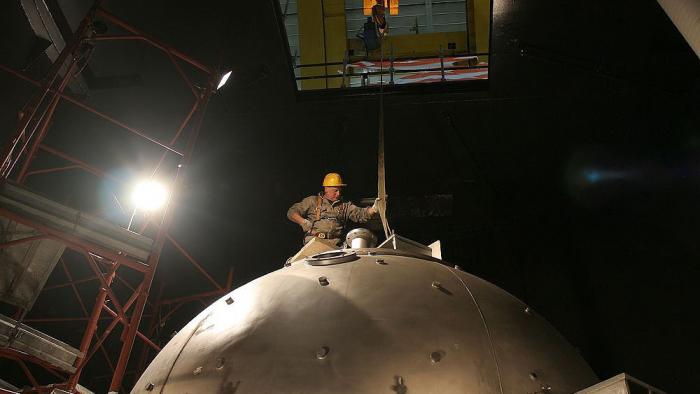 A treasure trove of dark-matter detectors rests within the deep reaches of Italy's Apennine Mountains as part of Gran Sasso National Laboratory. The mountains shield the detectors from cosmic rays, making them highly sensitive to dark-matter particles.
A treasure trove of dark-matter detectors rests within the deep reaches of Italy's Apennine Mountains as part of Gran Sasso National Laboratory. The mountains shield the detectors from cosmic rays, making them highly sensitive to dark-matter particles. "Scientific" should means "correct", among other things. But Scientific American has now changed to "Lying American".In the newest edition (see here) it writes about preons. Preons are known not to exist since decades. But the clowns of the Nature Publishing Group do not care. Why should they stick with the truth, when lies sell more journals?
"Scientific" should means "correct", among other things. But Scientific American has now changed to "Lying American".In the newest edition (see here) it writes about preons. Preons are known not to exist since decades. But the clowns of the Nature Publishing Group do not care. Why should they stick with the truth, when lies sell more journals? 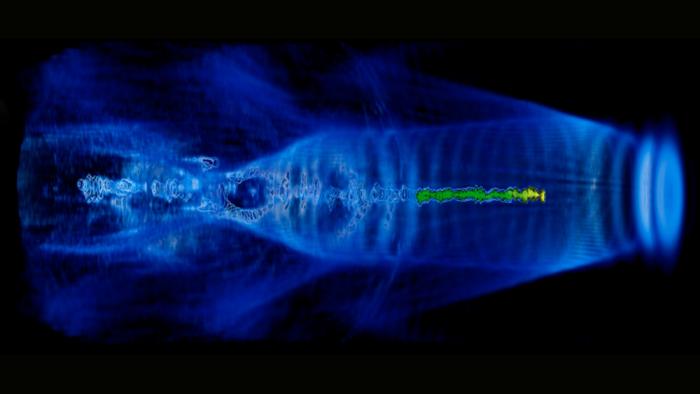 Seeking less costly, more efficient means of particle acceleration, physicists are developing new types of machines that zip particles to high energies in short distances. One promising method harnesses the power of plasma, accelerating electron bunches on the crest of plasma waves. Physicists recently discovered a way to measure the focus of such a beam, despite the fact that the plasma would melt traditional diagnostic tools.
Seeking less costly, more efficient means of particle acceleration, physicists are developing new types of machines that zip particles to high energies in short distances. One promising method harnesses the power of plasma, accelerating electron bunches on the crest of plasma waves. Physicists recently discovered a way to measure the focus of such a beam, despite the fact that the plasma would melt traditional diagnostic tools.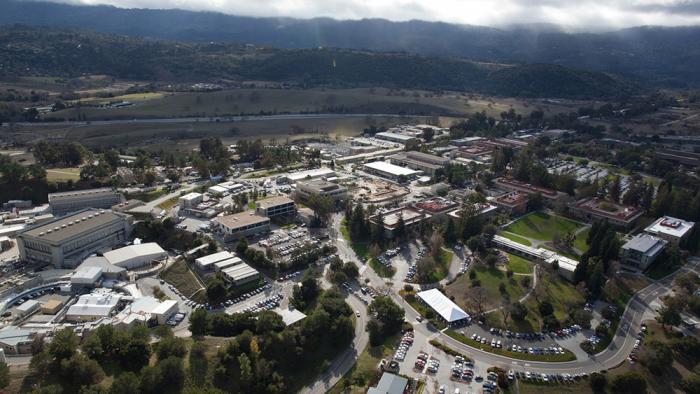 SLAC has a new director: X-ray scientist Chi-Chang Kao. Kao currently serves as Associate Laboratory Director for SLAC's Stanford Synchrotron Radiation Lightsource and Acting Associate Laboratory Director for the lab's Photon Science directorate. He will assume the directorship on November 1.
SLAC has a new director: X-ray scientist Chi-Chang Kao. Kao currently serves as Associate Laboratory Director for SLAC's Stanford Synchrotron Radiation Lightsource and Acting Associate Laboratory Director for the lab's Photon Science directorate. He will assume the directorship on November 1. Gravitational waves were first predicted by Albert Einstein almost a century ago, but scientists have yet to observe them directly.
Gravitational waves were first predicted by Albert Einstein almost a century ago, but scientists have yet to observe them directly. brown paper blue ink About me , Antarctica , and taking the long way home RSS Follow Blog via Email Enter your email address to follow this blog and receive notifications of new posts by . email Join 68 other followers Stuff I blog about Africa Antarctica Asia Border Crossing Cambodia Camping CAT equipment Centennial China Christchurch Contractor Earthquake Europe flying Food Home Jens Stoltenberg Leonardo's Basement Lockheed Lockheed Martin McMurdo MedEvac Minneapolis Minnesota Music News New Zealand Norway Palmer Photography Photos Roald Amundsen Robert Falcon Scott snow South Africa Southeast Asia South Pole Tanzania Thailand Travel Travel Health Weather Zambia Zanzibar Zimbabwe Archives October 2012 September 2012 August 2012 July 2012 May 2012 April 2012 March 2012 February 2012
brown paper blue ink About me , Antarctica , and taking the long way home RSS Follow Blog via Email Enter your email address to follow this blog and receive notifications of new posts by . email Join 68 other followers Stuff I blog about Africa Antarctica Asia Border Crossing Cambodia Camping CAT equipment Centennial China Christchurch Contractor Earthquake Europe flying Food Home Jens Stoltenberg Leonardo's Basement Lockheed Lockheed Martin McMurdo MedEvac Minneapolis Minnesota Music News New Zealand Norway Palmer Photography Photos Roald Amundsen Robert Falcon Scott snow South Africa Southeast Asia South Pole Tanzania Thailand Travel Travel Health Weather Zambia Zanzibar Zimbabwe Archives October 2012 September 2012 August 2012 July 2012 May 2012 April 2012 March 2012 February 2012 Quantum Diaries Thoughts on work and life from particle physicists from around the . world Home About Quantum Diaries Latest Posts All Blogs John Felde UC Davis USA View Blog Read Bio Latest Posts 2012.03.05 Fast Photosensors for Neutrino Physics 2011.11.22 Recent Events at UC Davis 2011.11.09 First Double Chooz Neutrino Oscillation Result USLHC USLHC USA View Blog Read Bio Latest Posts 2012.10.16 For the Higgs , No Theological Assistance Required 2012.10.13 Snowmass” Not Snowmass 2012.10.05 VERTEX 2012 Frank Simon MPI for Physics Germany View Blog Read Bio Latest Posts 2012.07.04 Plus Two 2011.12.14 After the talk is before the talk 2011.10.24 Breathe Flip Tanedo USLHC USA View Blog Read Bio Latest Posts 2012.07.19 The Post-Higgs Hangover : where’s the new physics 2012.07.06 More
Quantum Diaries Thoughts on work and life from particle physicists from around the . world Home About Quantum Diaries Latest Posts All Blogs John Felde UC Davis USA View Blog Read Bio Latest Posts 2012.03.05 Fast Photosensors for Neutrino Physics 2011.11.22 Recent Events at UC Davis 2011.11.09 First Double Chooz Neutrino Oscillation Result USLHC USLHC USA View Blog Read Bio Latest Posts 2012.10.16 For the Higgs , No Theological Assistance Required 2012.10.13 Snowmass” Not Snowmass 2012.10.05 VERTEX 2012 Frank Simon MPI for Physics Germany View Blog Read Bio Latest Posts 2012.07.04 Plus Two 2011.12.14 After the talk is before the talk 2011.10.24 Breathe Flip Tanedo USLHC USA View Blog Read Bio Latest Posts 2012.07.19 The Post-Higgs Hangover : where’s the new physics 2012.07.06 More Quantum Diaries Thoughts on work and life from particle physicists from around the . world Home About Quantum Diaries Latest Posts All Blogs John Felde UC Davis USA View Blog Read Bio Latest Posts 2012.03.05 Fast Photosensors for Neutrino Physics 2011.11.22 Recent Events at UC Davis 2011.11.09 First Double Chooz Neutrino Oscillation Result USLHC USLHC USA View Blog Read Bio Latest Posts 2012.10.16 For the Higgs , No Theological Assistance Required 2012.10.13 Snowmass” Not Snowmass 2012.10.05 VERTEX 2012 Frank Simon MPI for Physics Germany View Blog Read Bio Latest Posts 2012.07.04 Plus Two 2011.12.14 After the talk is before the talk 2011.10.24 Breathe Flip Tanedo USLHC USA View Blog Read Bio Latest Posts 2012.07.19 The Post-Higgs Hangover : where’s the new physics 2012.07.06 More
Quantum Diaries Thoughts on work and life from particle physicists from around the . world Home About Quantum Diaries Latest Posts All Blogs John Felde UC Davis USA View Blog Read Bio Latest Posts 2012.03.05 Fast Photosensors for Neutrino Physics 2011.11.22 Recent Events at UC Davis 2011.11.09 First Double Chooz Neutrino Oscillation Result USLHC USLHC USA View Blog Read Bio Latest Posts 2012.10.16 For the Higgs , No Theological Assistance Required 2012.10.13 Snowmass” Not Snowmass 2012.10.05 VERTEX 2012 Frank Simon MPI for Physics Germany View Blog Read Bio Latest Posts 2012.07.04 Plus Two 2011.12.14 After the talk is before the talk 2011.10.24 Breathe Flip Tanedo USLHC USA View Blog Read Bio Latest Posts 2012.07.19 The Post-Higgs Hangover : where’s the new physics 2012.07.06 More , Taxonomy From Wikipedia , the free encyclopedia Jump to : navigation search This page is about taxonomy of biological organisms . For other uses see Taxonomy general and Taxonomy disambiguation Taxonomy from ancient Greek ÏÎ¬Î¾Î¹Ï taxis arrangement , and νΠμία nomia method 1 is the academic discipline of defining groups of biological organisms on the basis of shared characteristics and giving names to those groups . Each group is given a rank and groups of a given rank can be aggregated to form a super group of higher rank and thus create a hierarchical classification 2 3 The groups created through this process are referred to as taxa singular taxon An example of a modern classification is the one published in 2009 by the Angiosperm Phylogeny Group for all living flowering plant
, Taxonomy From Wikipedia , the free encyclopedia Jump to : navigation search This page is about taxonomy of biological organisms . For other uses see Taxonomy general and Taxonomy disambiguation Taxonomy from ancient Greek ÏÎ¬Î¾Î¹Ï taxis arrangement , and νΠμία nomia method 1 is the academic discipline of defining groups of biological organisms on the basis of shared characteristics and giving names to those groups . Each group is given a rank and groups of a given rank can be aggregated to form a super group of higher rank and thus create a hierarchical classification 2 3 The groups created through this process are referred to as taxa singular taxon An example of a modern classification is the one published in 2009 by the Angiosperm Phylogeny Group for all living flowering plant : Skip to main content CERN the European Organization for Nuclear Research International Particle Physics Outreach Group Login Sign-up FAQs Search form Search Main menu Home About Members Resources Masterclasses You are here Home Error message Notice Undefined property : stdClass : field_resource_attach in lambda_func( line 1 of var www html drupal drupal-7.15-cern-0.4 sites ippog.web.cern.ch modules views_php plugins views views_php_handler_field.inc(202 runtime-created function Notice Use of undefined constant revision_id assumed revision_id' in lambda_func( line 1 of var www html drupal drupal-7.15-cern-0.4 sites ippog.web.cern.ch modules views_php plugins views views_php_handler_field.inc(202 runtime-created function ATLAS Virtual Visits : Bringing the World into the ATLAS Control Room
: Skip to main content CERN the European Organization for Nuclear Research International Particle Physics Outreach Group Login Sign-up FAQs Search form Search Main menu Home About Members Resources Masterclasses You are here Home Error message Notice Undefined property : stdClass : field_resource_attach in lambda_func( line 1 of var www html drupal drupal-7.15-cern-0.4 sites ippog.web.cern.ch modules views_php plugins views views_php_handler_field.inc(202 runtime-created function Notice Use of undefined constant revision_id assumed revision_id' in lambda_func( line 1 of var www html drupal drupal-7.15-cern-0.4 sites ippog.web.cern.ch modules views_php plugins views views_php_handler_field.inc(202 runtime-created function ATLAS Virtual Visits : Bringing the World into the ATLAS Control Room Home Scientific Outreach About What's New Contact Careers Perimeter Scholars International Support Français SCIENTIFIC Research Areas Seminars PIRSA Conferences Courses Positions Publications Visitors Research Staff Shuttle Service OUTREACH About General Public Teachers Students Public Lectures Arts and Culture ABOUT What's New Careers People Internal Contact Us 31 Caroline St . N . Waterloo Ontario , Canada N2L 2Y5 Tel : 519 569-7600 Fax : 519 569-7611 HEADLINES more POSTDOC APPLICATIONS NOW BEING ACCEPTED Recruitment has started for postdoctoral fellowships to being in fall 2013. RECRUITING ASSOCIATE FACULTY WITH WESTERN Perimeter and Western are recruiting for a joint position in theoretical physics . WORLD'S FIRST GLIMPSE OF BLACK HOLE LAUNCHPAD Science Express features a paper by the
Home Scientific Outreach About What's New Contact Careers Perimeter Scholars International Support Français SCIENTIFIC Research Areas Seminars PIRSA Conferences Courses Positions Publications Visitors Research Staff Shuttle Service OUTREACH About General Public Teachers Students Public Lectures Arts and Culture ABOUT What's New Careers People Internal Contact Us 31 Caroline St . N . Waterloo Ontario , Canada N2L 2Y5 Tel : 519 569-7600 Fax : 519 569-7611 HEADLINES more POSTDOC APPLICATIONS NOW BEING ACCEPTED Recruitment has started for postdoctoral fellowships to being in fall 2013. RECRUITING ASSOCIATE FACULTY WITH WESTERN Perimeter and Western are recruiting for a joint position in theoretical physics . WORLD'S FIRST GLIMPSE OF BLACK HOLE LAUNCHPAD Science Express features a paper by the TRIUMF Canada's National Laboratory for Particle and Nuclear Physics Canada's national laboratory for particle and nuclear physics Laboratoire national canadien pour la recherche en physique nucléaire et en physique des particules Home About TRIUMF Research Administration Login Directory Visiting TRIUMF Tours of TRIUMF TRIUMF House Parking Information For Students Teachers For Visiting Researchers Upcoming Events Upcoming Seminars Lectures Upcoming Conferences Global Photowalk 2012 Multimedia Videos Reports Newsletter Library Publications Office Style Guide Press Room News Releases Medical Isotopes Fact Sheets Media Contact Speakers Bureau Careers at TRIUMF TRIUMF House Contact Us Our Future Vision The ARIEL Facility Innovation Partner Connect Owned and Operated as a joint venture by
TRIUMF Canada's National Laboratory for Particle and Nuclear Physics Canada's national laboratory for particle and nuclear physics Laboratoire national canadien pour la recherche en physique nucléaire et en physique des particules Home About TRIUMF Research Administration Login Directory Visiting TRIUMF Tours of TRIUMF TRIUMF House Parking Information For Students Teachers For Visiting Researchers Upcoming Events Upcoming Seminars Lectures Upcoming Conferences Global Photowalk 2012 Multimedia Videos Reports Newsletter Library Publications Office Style Guide Press Room News Releases Medical Isotopes Fact Sheets Media Contact Speakers Bureau Careers at TRIUMF TRIUMF House Contact Us Our Future Vision The ARIEL Facility Innovation Partner Connect Owned and Operated as a joint venture by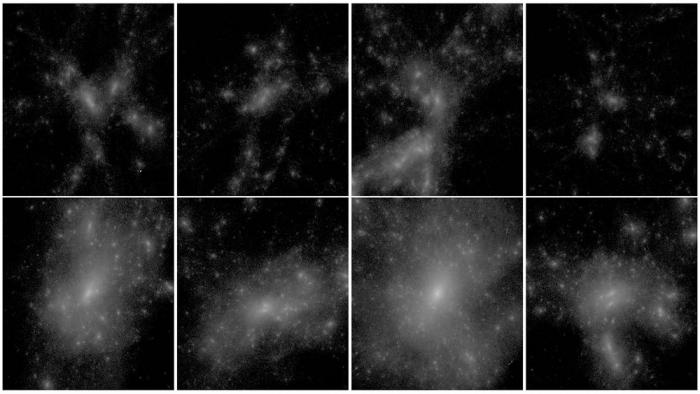 Scientists from the groups of professors Risa Wechsler and Tom Abel at the Kavli Institute for Particle Astrophysics and Cosmology, an institute run jointly by Stanford University and SLAC National Accelerator Laboratory, are busily crafting enough computer simulation tools to outfit a major stadium tour—if simulations were musical instruments and the KIPAC scientists a supergroup. They’ve managed to meld their different strains of software into the type of melody that dark matter just might dance to.
Scientists from the groups of professors Risa Wechsler and Tom Abel at the Kavli Institute for Particle Astrophysics and Cosmology, an institute run jointly by Stanford University and SLAC National Accelerator Laboratory, are busily crafting enough computer simulation tools to outfit a major stadium tour—if simulations were musical instruments and the KIPAC scientists a supergroup. They’ve managed to meld their different strains of software into the type of melody that dark matter just might dance to. Quantum Diaries Thoughts on work and life from particle physicists from around the . world Home About Quantum Diaries Latest Posts All Blogs John Felde UC Davis USA View Blog Read Bio Latest Posts 2012.03.05 Fast Photosensors for Neutrino Physics 2011.11.22 Recent Events at UC Davis 2011.11.09 First Double Chooz Neutrino Oscillation Result USLHC USLHC USA View Blog Read Bio Latest Posts 2012.10.16 For the Higgs , No Theological Assistance Required 2012.10.13 Snowmass” Not Snowmass 2012.10.05 VERTEX 2012 Frank Simon MPI for Physics Germany View Blog Read Bio Latest Posts 2012.07.04 Plus Two 2011.12.14 After the talk is before the talk 2011.10.24 Breathe Flip Tanedo USLHC USA View Blog Read Bio Latest Posts 2012.07.19 The Post-Higgs Hangover : where’s the new physics 2012.07.06 More
Quantum Diaries Thoughts on work and life from particle physicists from around the . world Home About Quantum Diaries Latest Posts All Blogs John Felde UC Davis USA View Blog Read Bio Latest Posts 2012.03.05 Fast Photosensors for Neutrino Physics 2011.11.22 Recent Events at UC Davis 2011.11.09 First Double Chooz Neutrino Oscillation Result USLHC USLHC USA View Blog Read Bio Latest Posts 2012.10.16 For the Higgs , No Theological Assistance Required 2012.10.13 Snowmass” Not Snowmass 2012.10.05 VERTEX 2012 Frank Simon MPI for Physics Germany View Blog Read Bio Latest Posts 2012.07.04 Plus Two 2011.12.14 After the talk is before the talk 2011.10.24 Breathe Flip Tanedo USLHC USA View Blog Read Bio Latest Posts 2012.07.19 The Post-Higgs Hangover : where’s the new physics 2012.07.06 More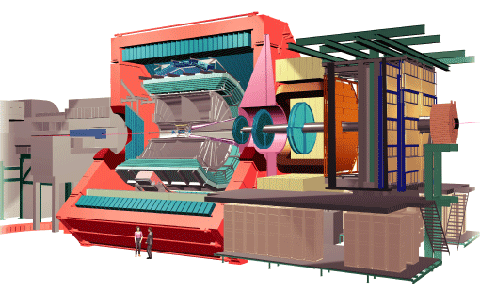 : Home Sitemap Contact us this site all CERN CERN European Organization for Nuclear Research The Large Hadron Collider About us Science Research The LHC People Why the LHC How the LHC works Heavy-ion physics The LHC Experiments ALICE ATLAS CMS LHCb TOTEM LHCf Computing The safety of the LHC Facts and figures LHC Milestones ALICE A Large Ion Collider Experiment For the ALICE experiment , the LHC will collide lead ions to recreate the conditions just after the Big Bang under laboratory conditions . The data obtained will allow physicists to study a state of matter known as quark‑gluon plasma , which is believed to have existed soon after the Big . Bang All ordinary matter in today's Universe is made up of atoms . Each atom contains a nucleus composed of protons and neutrons , surrounded by a
: Home Sitemap Contact us this site all CERN CERN European Organization for Nuclear Research The Large Hadron Collider About us Science Research The LHC People Why the LHC How the LHC works Heavy-ion physics The LHC Experiments ALICE ATLAS CMS LHCb TOTEM LHCf Computing The safety of the LHC Facts and figures LHC Milestones ALICE A Large Ion Collider Experiment For the ALICE experiment , the LHC will collide lead ions to recreate the conditions just after the Big Bang under laboratory conditions . The data obtained will allow physicists to study a state of matter known as quark‑gluon plasma , which is believed to have existed soon after the Big . Bang All ordinary matter in today's Universe is made up of atoms . Each atom contains a nucleus composed of protons and neutrons , surrounded by a Accueil Plan du site Nous contacter dans ce site CERN CERN Organisation européenne pour la recherche nucléaire Le LHC Le CERN La science La recherche Le LHC Les hommes et les femmes Pourquoi le LHC Fonctionnement du LHC Physique des ions lourds Les expériences ALICE ATLAS CMS LHCb TOTEM LHCf L'informatique au LHC Sécurité du LHC Faits et chiffres Les dates clés du LHC ALICE A Large Ion Collider Experiment Pour l'expérience ALICE , le LHC fera entrer en collision des ions plomb afin de recréer en laboratoire les conditions qui régnaient juste après le Big Bang . Les données obtenues permettront d'étudier l'évolution de la matière de la naissance de l'Univers à nos . jours Toute la matière ordinaire présente dans l'Univers d'aujourd'hui est composée d'atomes . Chaque atome est constitué d'un
Accueil Plan du site Nous contacter dans ce site CERN CERN Organisation européenne pour la recherche nucléaire Le LHC Le CERN La science La recherche Le LHC Les hommes et les femmes Pourquoi le LHC Fonctionnement du LHC Physique des ions lourds Les expériences ALICE ATLAS CMS LHCb TOTEM LHCf L'informatique au LHC Sécurité du LHC Faits et chiffres Les dates clés du LHC ALICE A Large Ion Collider Experiment Pour l'expérience ALICE , le LHC fera entrer en collision des ions plomb afin de recréer en laboratoire les conditions qui régnaient juste après le Big Bang . Les données obtenues permettront d'étudier l'évolution de la matière de la naissance de l'Univers à nos . jours Toute la matière ordinaire présente dans l'Univers d'aujourd'hui est composée d'atomes . Chaque atome est constitué d'un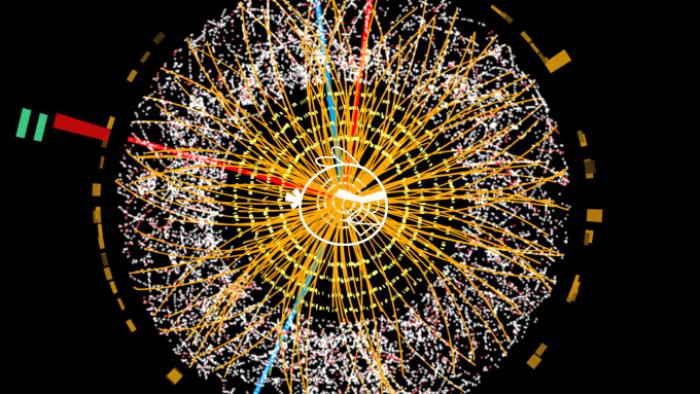 CERN and Angry Birds-creator Rovio announced last Friday that they will team up to produce a learning program for children between 3 and 8 years old.
The partnership will focus on the Angry Birds Playground brand, which is designed to make learning about physics fun and accessible for all ages. It is based on Finland’s national kindergarten curriculum.
CERN and Angry Birds-creator Rovio announced last Friday that they will team up to produce a learning program for children between 3 and 8 years old.
The partnership will focus on the Angry Birds Playground brand, which is designed to make learning about physics fun and accessible for all ages. It is based on Finland’s national kindergarten curriculum. TweetWe have shown throughout the Imagineer’s Chronicles and its companion book "The Reality of the Fourth *Spatial* Dimension" there would many theoretical advantages to defining the universe in terms of four *spatial* dimensions instead of four dimensional space-time. One of them is that it would give explanation of why time is dilated in bodies that [...]
TweetWe have shown throughout the Imagineer’s Chronicles and its companion book "The Reality of the Fourth *Spatial* Dimension" there would many theoretical advantages to defining the universe in terms of four *spatial* dimensions instead of four dimensional space-time. One of them is that it would give explanation of why time is dilated in bodies that [...]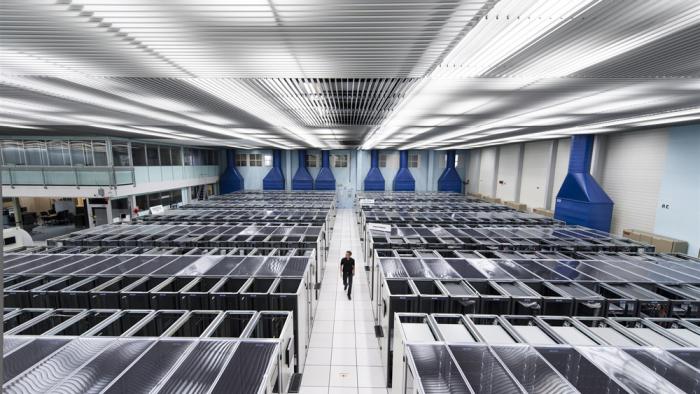 Anyone in the world with a computer can contribute to research at CERN. Through the LHC@Home project, volunteers can offer up spare computing power to simulate and process collisions happening inside the Large Hadron Collider.
CERN recently improved the program with a new feature that helps scientists monitor the system that distributes work among volunteers’ computers. But the new feature is not the work of a CERN employee; it is the work of a college undergraduate who had the chance to work with CERN through the 2012 Google Summer of Code.
Anyone in the world with a computer can contribute to research at CERN. Through the LHC@Home project, volunteers can offer up spare computing power to simulate and process collisions happening inside the Large Hadron Collider.
CERN recently improved the program with a new feature that helps scientists monitor the system that distributes work among volunteers’ computers. But the new feature is not the work of a CERN employee; it is the work of a college undergraduate who had the chance to work with CERN through the 2012 Google Summer of Code. : : Physics Without Ideology Satire About the Theory of Everything Satire about the search for a unfied theory in physics , and about the strand-spaghetti model in . partcular 14 October 2012 Arxiv Desert : Shocked Old Male Researchers Allow Younger Ones a Fresh Start Do you follow the papers in arxiv hep-th This is the section where the smartest and most driven physicists of the planet publish their efforts for a theory of everything . It is always worth looking at the papers . But what do we learn Since years , the hep-th collection has not produced a good idea for unification . Supersymmetry , string theory and loop quantum gravity all failed . But nothing else is coming up . How can this be How can it be that all these smart people fail What are these mostly men doing One commenter
: : Physics Without Ideology Satire About the Theory of Everything Satire about the search for a unfied theory in physics , and about the strand-spaghetti model in . partcular 14 October 2012 Arxiv Desert : Shocked Old Male Researchers Allow Younger Ones a Fresh Start Do you follow the papers in arxiv hep-th This is the section where the smartest and most driven physicists of the planet publish their efforts for a theory of everything . It is always worth looking at the papers . But what do we learn Since years , the hep-th collection has not produced a good idea for unification . Supersymmetry , string theory and loop quantum gravity all failed . But nothing else is coming up . How can this be How can it be that all these smart people fail What are these mostly men doing One commenter
 American Physical Society Sites APS Journals PhysicsCentral Physics Become an APS Member Contact Us Division of Particles Fields Governance Newsletters Meetings APS Fellowship Prizes Awards Resources Email Print Share Division of Particles Fields The objective of the Division is the study of fundamental particles and fields , their structure , their interactions and interrelationships , the design and development of high energy accelerators , and the design and development of instrumentation techniques for high energy . physics News Community Planning Meetings starting Oct 2012 DPF Newsletter APS Multidivisional Neutrino Study A Joint Study on the Future of Neutrino Physics : The Neutrino Matrix Upcoming Meetings APS April Meeting 2013 April 13-16, 2013 APS April Meeting 2014 April 5-8,
American Physical Society Sites APS Journals PhysicsCentral Physics Become an APS Member Contact Us Division of Particles Fields Governance Newsletters Meetings APS Fellowship Prizes Awards Resources Email Print Share Division of Particles Fields The objective of the Division is the study of fundamental particles and fields , their structure , their interactions and interrelationships , the design and development of high energy accelerators , and the design and development of instrumentation techniques for high energy . physics News Community Planning Meetings starting Oct 2012 DPF Newsletter APS Multidivisional Neutrino Study A Joint Study on the Future of Neutrino Physics : The Neutrino Matrix Upcoming Meetings APS April Meeting 2013 April 13-16, 2013 APS April Meeting 2014 April 5-8, American Physical Society Sites APS Journals PhysicsCentral Physics Login Become a Member Contact Us Journals of the American Physical Society APS News Physics Physics Today Capitol Hill Quarterly Other APS Publications Reciprocal Society Newsletters March Meeting April Meeting Meeting Calendar Abstract Submission Archives of the Bulletin of the American Physical Society Policies Guidelines Meeting Presentations Virtual Press Rooms Education International Affairs Physics for All Women in Physics Minorities in Physics Prizes , Awards Fellows Join APS Renew Membership Member Directory My Member Profile Member Services APS Units Issues Reports Studies APS Statements Advocacy Tools Advocacy Resources Fellowships Fellows Contact APS Public Affairs Physics Jobs Becoming a Physicist Career
American Physical Society Sites APS Journals PhysicsCentral Physics Login Become a Member Contact Us Journals of the American Physical Society APS News Physics Physics Today Capitol Hill Quarterly Other APS Publications Reciprocal Society Newsletters March Meeting April Meeting Meeting Calendar Abstract Submission Archives of the Bulletin of the American Physical Society Policies Guidelines Meeting Presentations Virtual Press Rooms Education International Affairs Physics for All Women in Physics Minorities in Physics Prizes , Awards Fellows Join APS Renew Membership Member Directory My Member Profile Member Services APS Units Issues Reports Studies APS Statements Advocacy Tools Advocacy Resources Fellowships Fellows Contact APS Public Affairs Physics Jobs Becoming a Physicist Career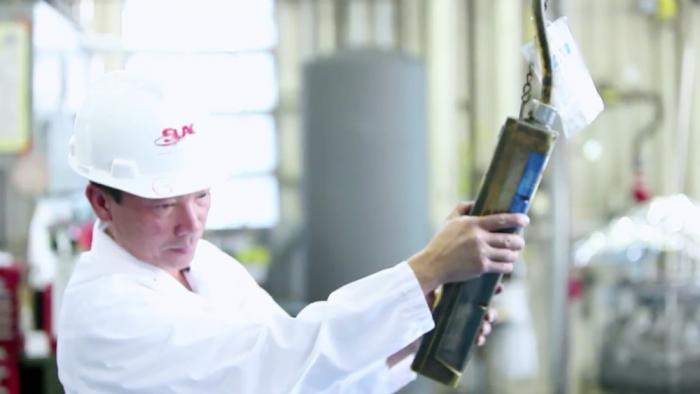 Every year, particle accelerators play an essential role in scientific discovery, industry and even medicine. But what does it take to make an accelerator run? This video, produced by SLAC National Accelerator Laboratory, takes you into the department that builds klystrons, the devices that propel particles to nearly the speed of light within SLAC’s accelerators.
Every year, particle accelerators play an essential role in scientific discovery, industry and even medicine. But what does it take to make an accelerator run? This video, produced by SLAC National Accelerator Laboratory, takes you into the department that builds klystrons, the devices that propel particles to nearly the speed of light within SLAC’s accelerators. 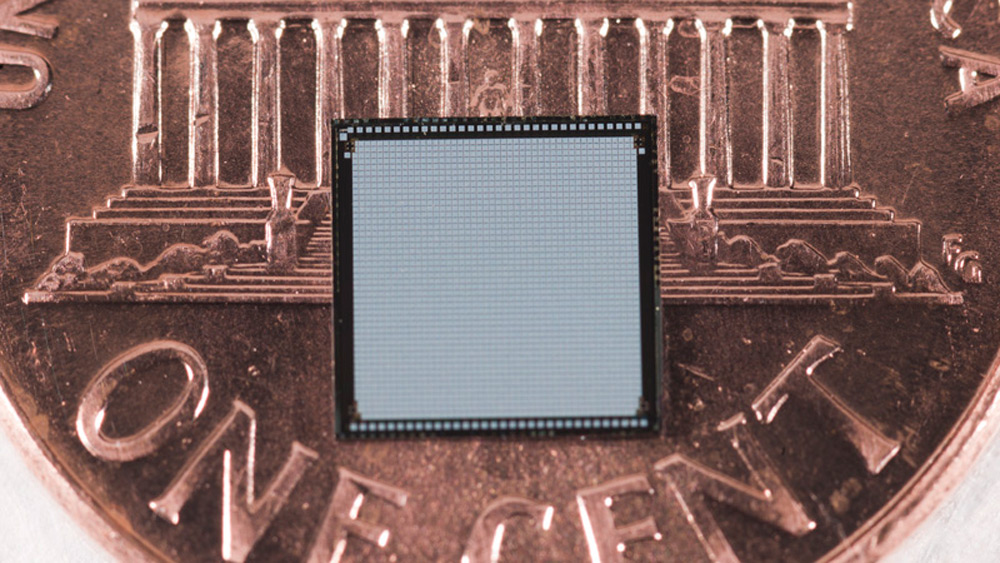 Particle detectors are the eyes of physicists, peering closely into particle events to help us understand the basic laws of nature.
To develop the kind of sight needed to view the complex particle events of future experiments, researchers are transforming detection technology by developing new, intelligent detectors. They are pushing past the limits of two-dimensional chips, the current technology, by adding to them another dimension. The three-dimensional integrated chip, or 3DIC, will be key for future detectors.
Particle detectors are the eyes of physicists, peering closely into particle events to help us understand the basic laws of nature.
To develop the kind of sight needed to view the complex particle events of future experiments, researchers are transforming detection technology by developing new, intelligent detectors. They are pushing past the limits of two-dimensional chips, the current technology, by adding to them another dimension. The three-dimensional integrated chip, or 3DIC, will be key for future detectors.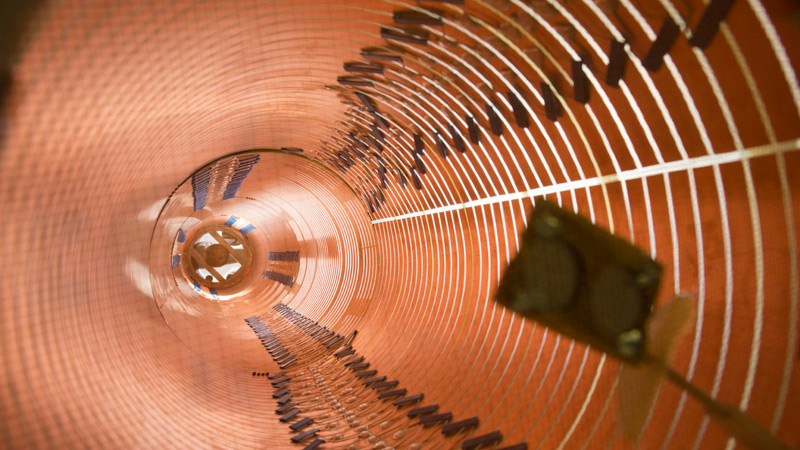 This type of detector may have a futuristic name, but it already has a spot in the history of particle physics.
This type of detector may have a futuristic name, but it already has a spot in the history of particle physics. This year Nobel prize went to quantum optics for experiments that could be useful on the road to quantum computation. The awarded are Serge Haroche of the College de France and David Wineland from NIST (US). They performed groundbreaking studies working with cavities and ion traps on single atoms and photons. I have had the [...]
This year Nobel prize went to quantum optics for experiments that could be useful on the road to quantum computation. The awarded are Serge Haroche of the College de France and David Wineland from NIST (US). They performed groundbreaking studies working with cavities and ion traps on single atoms and photons. I have had the [...] Ryan Campbell, an ecologist with Fermilab’s Roads and Grounds Group, leans back in his office chair on a hot, humid Illinois summer morning. His gaze fixes on a large aerial photograph of the Fermilab property, on which he’d placed nametags on some of the large swaths of green fields and forests.
Ryan Campbell, an ecologist with Fermilab’s Roads and Grounds Group, leans back in his office chair on a hot, humid Illinois summer morning. His gaze fixes on a large aerial photograph of the Fermilab property, on which he’d placed nametags on some of the large swaths of green fields and forests. The Royal Swedish Academy of Sciences has awarded the 2012 Nobel Prize in physics to two scientists who developed groundbreaking experimental methods that are the first steps toward building a new type of supercomputer known as a quantum computer. Their research has also led to the construction of extremely precise clocks that may replace present-day atomic clocks.
The Royal Swedish Academy of Sciences has awarded the 2012 Nobel Prize in physics to two scientists who developed groundbreaking experimental methods that are the first steps toward building a new type of supercomputer known as a quantum computer. Their research has also led to the construction of extremely precise clocks that may replace present-day atomic clocks.